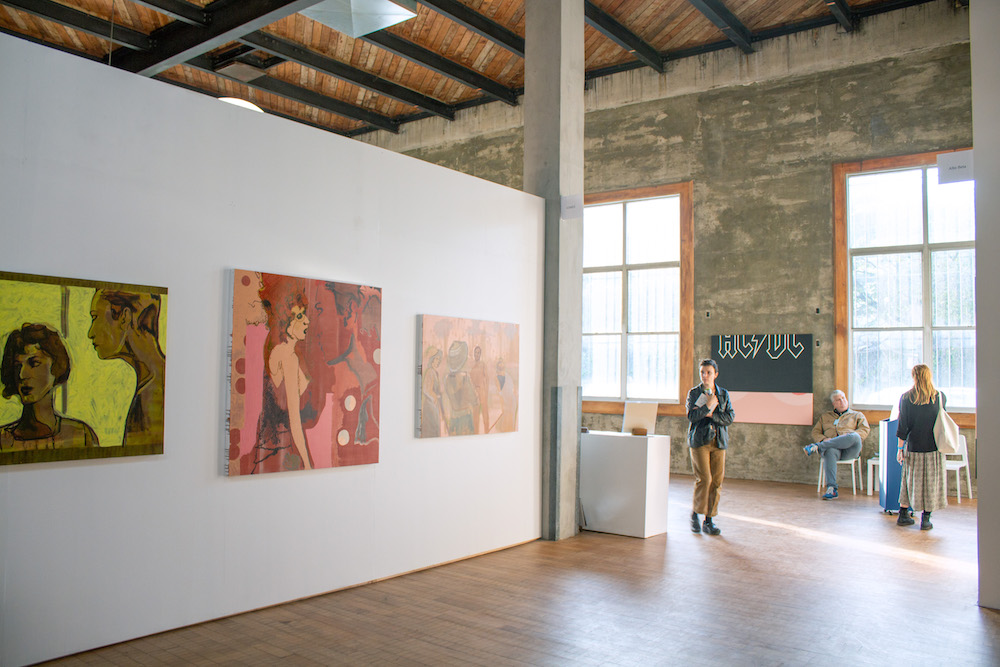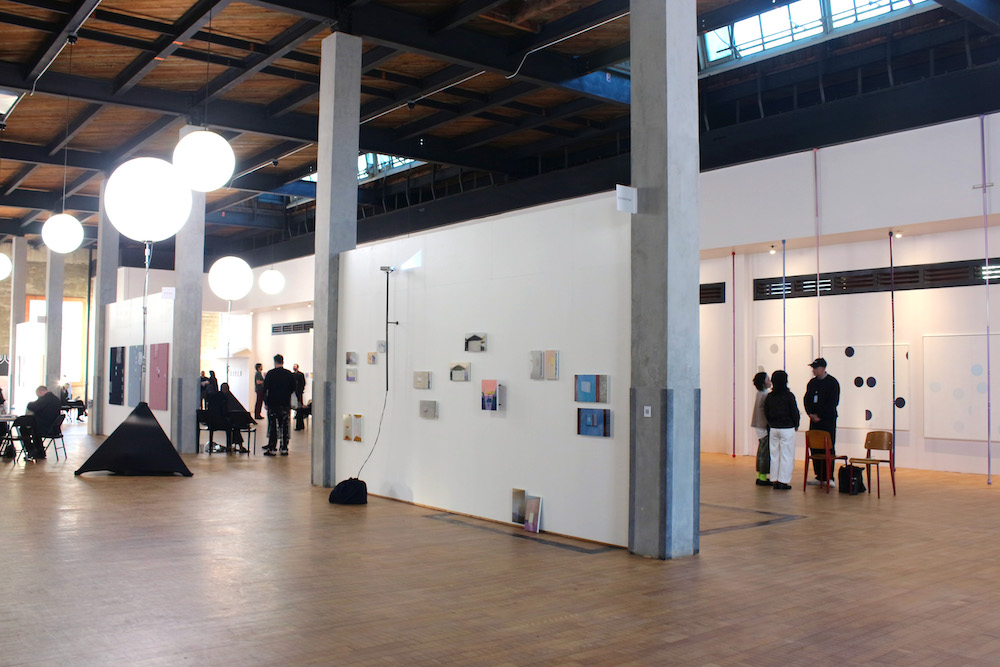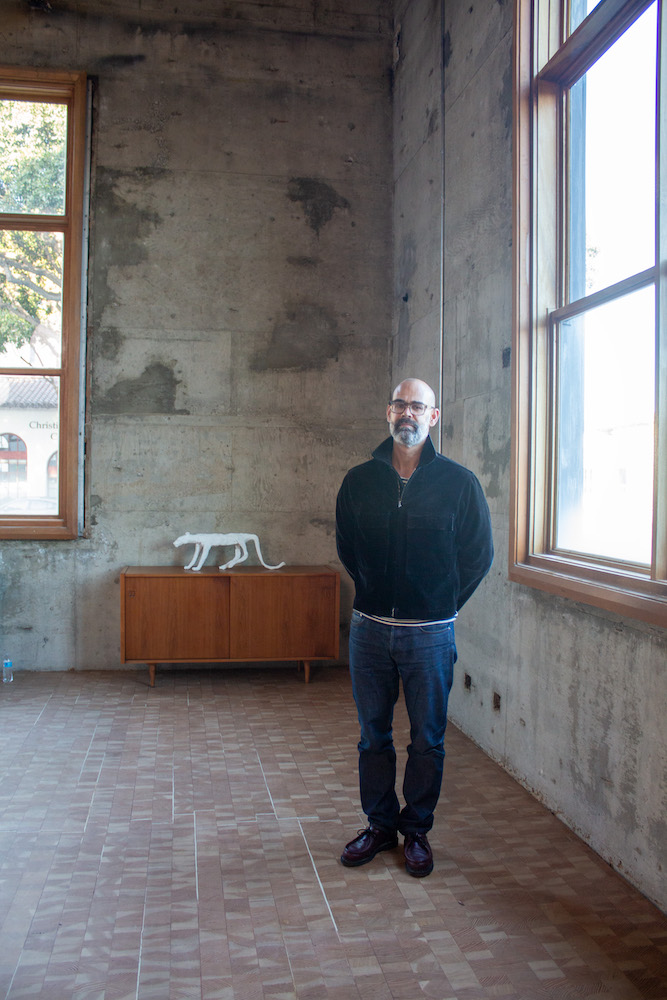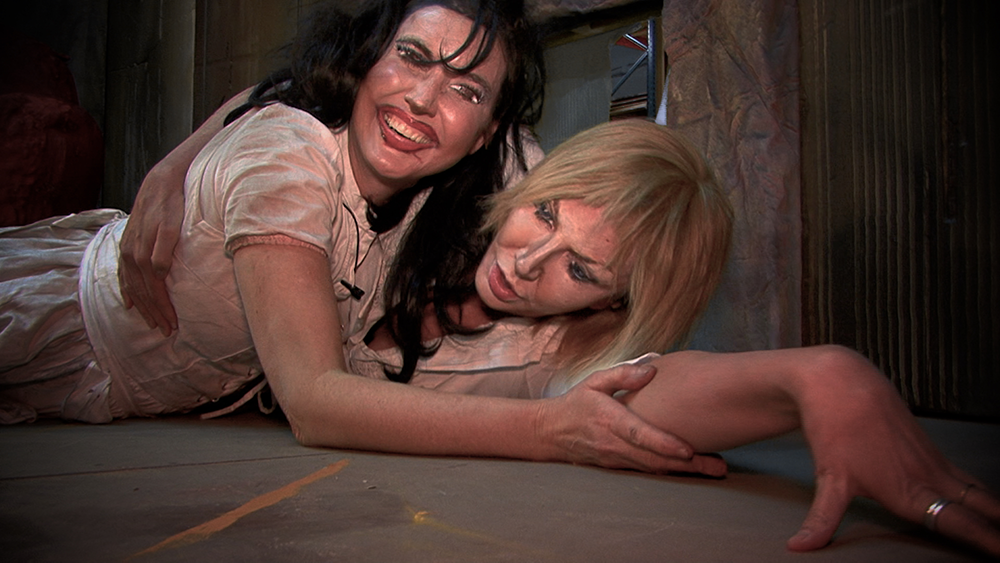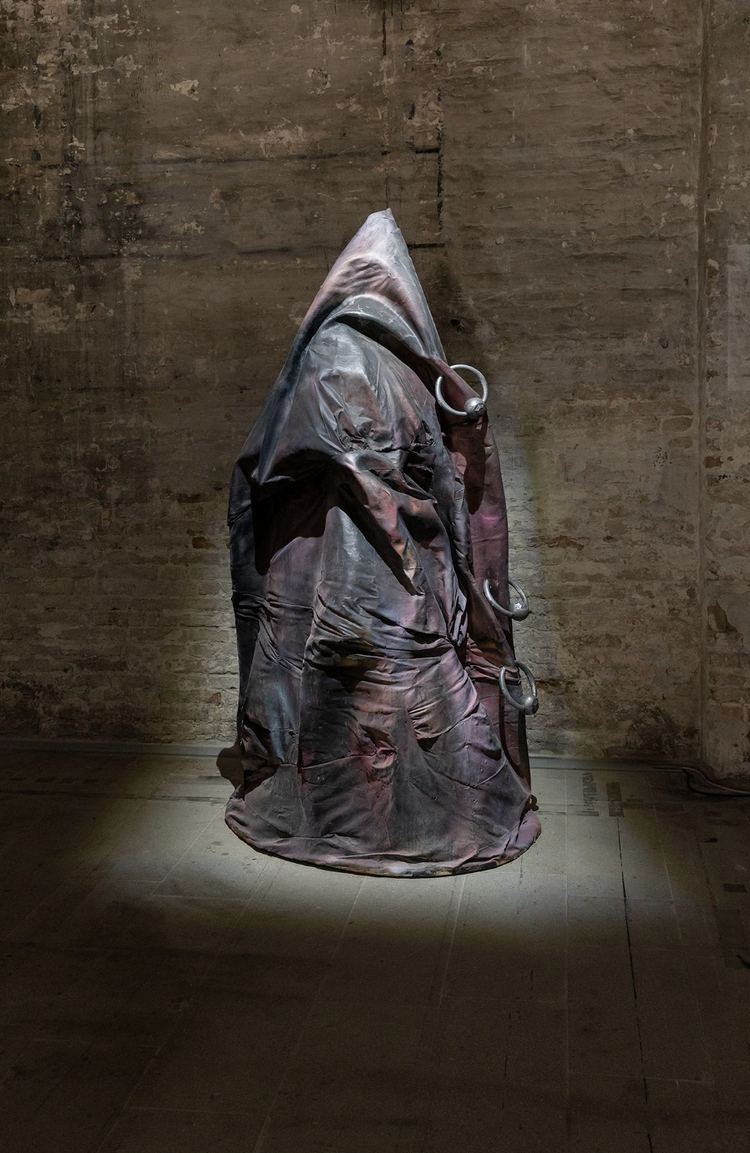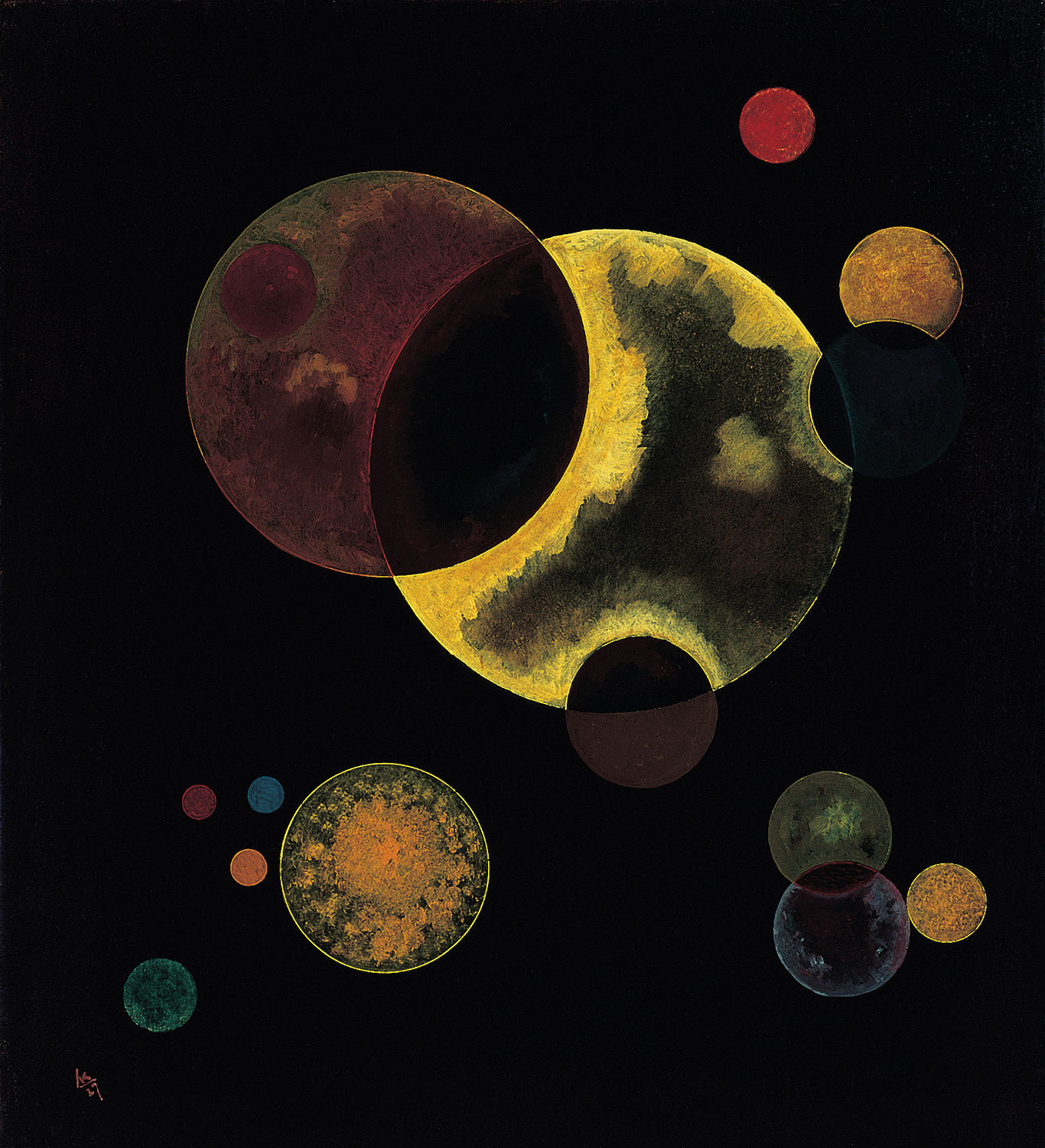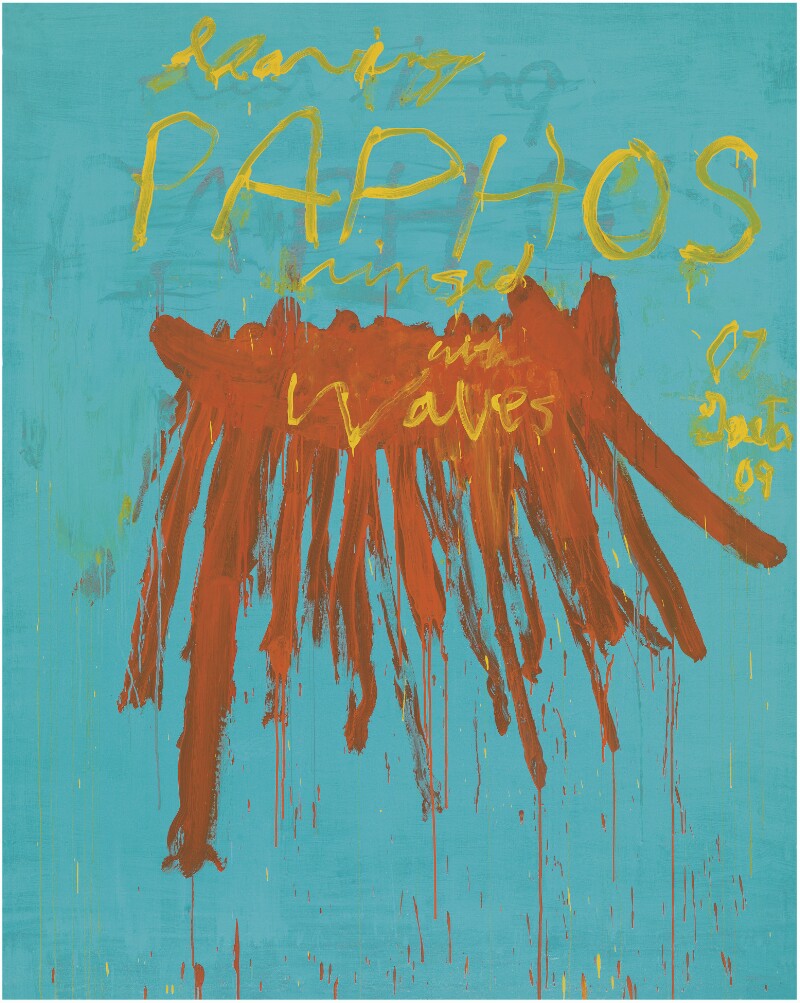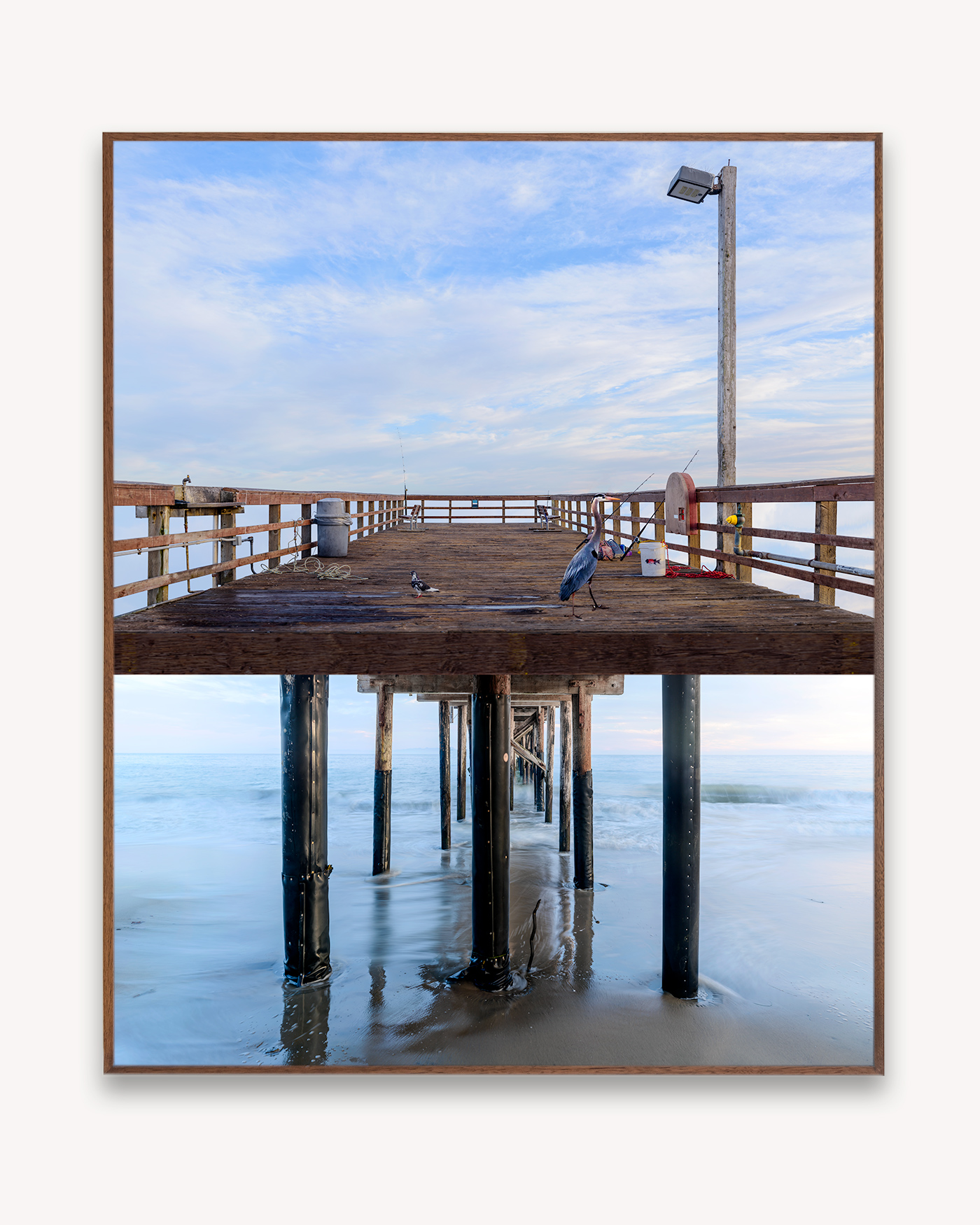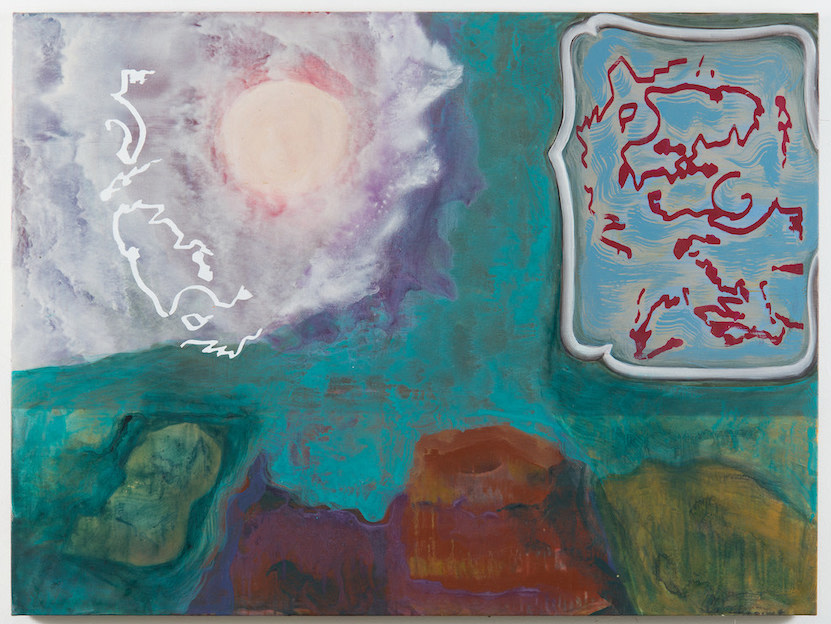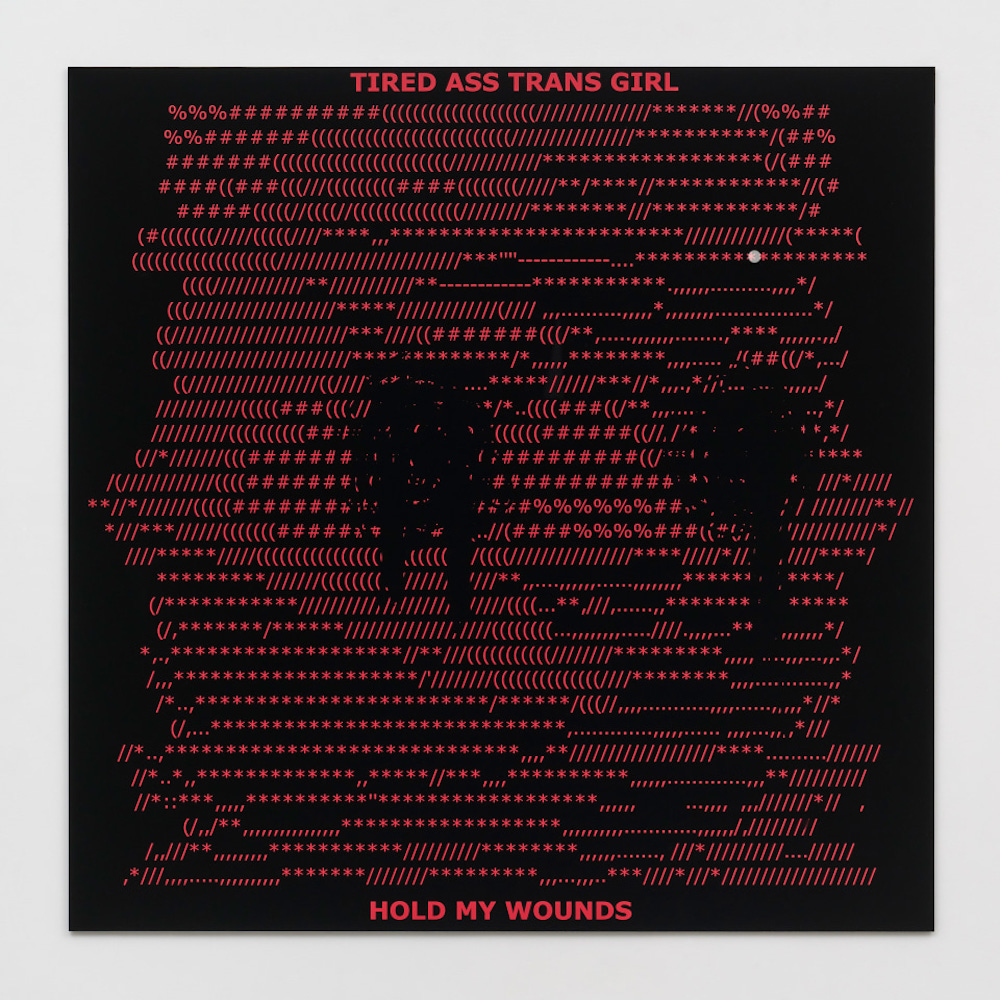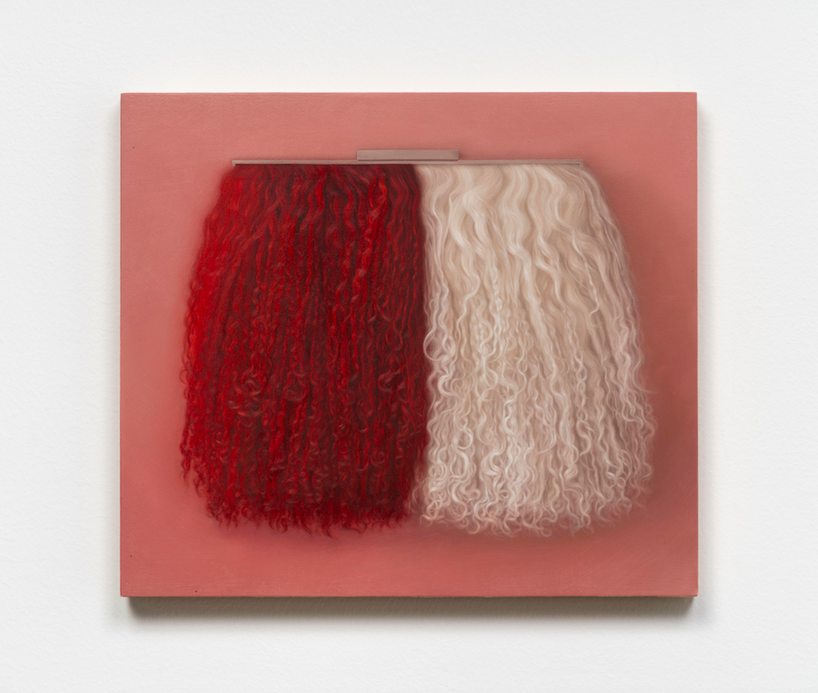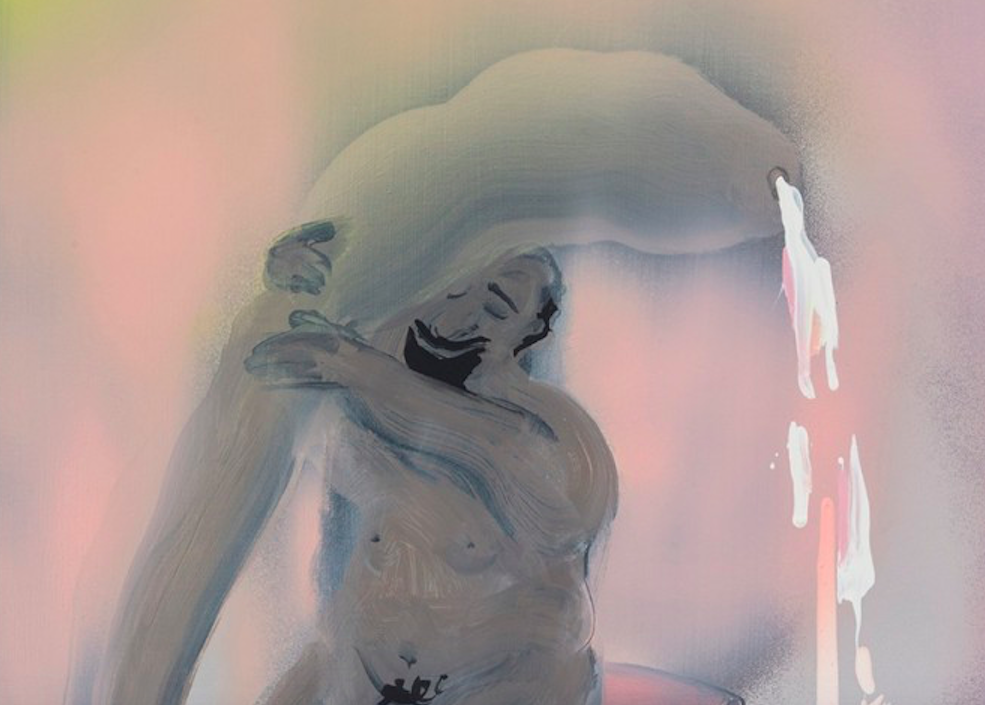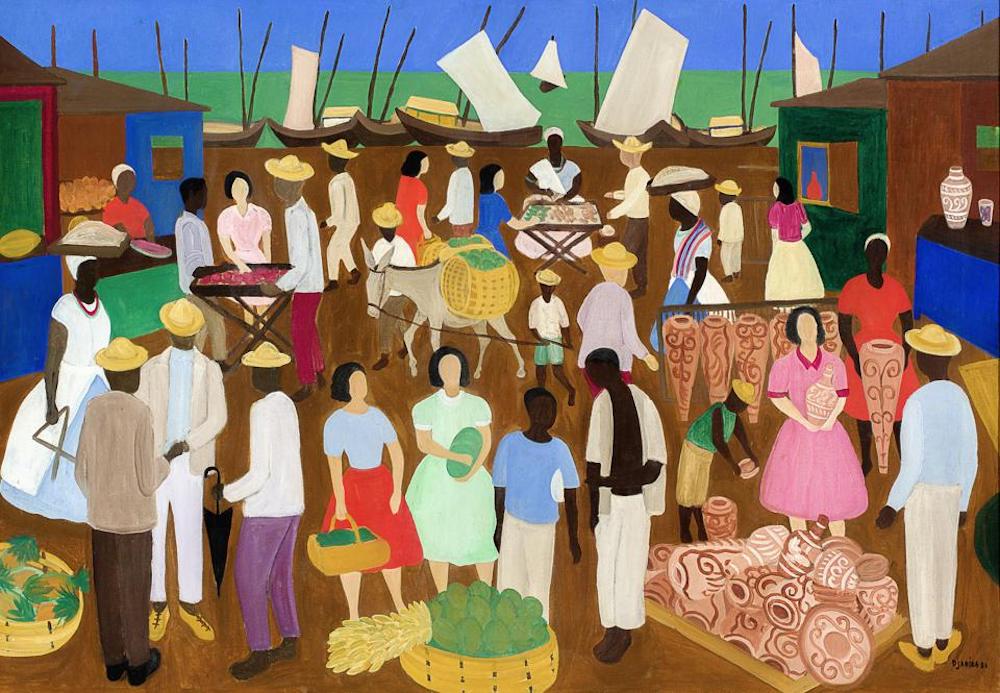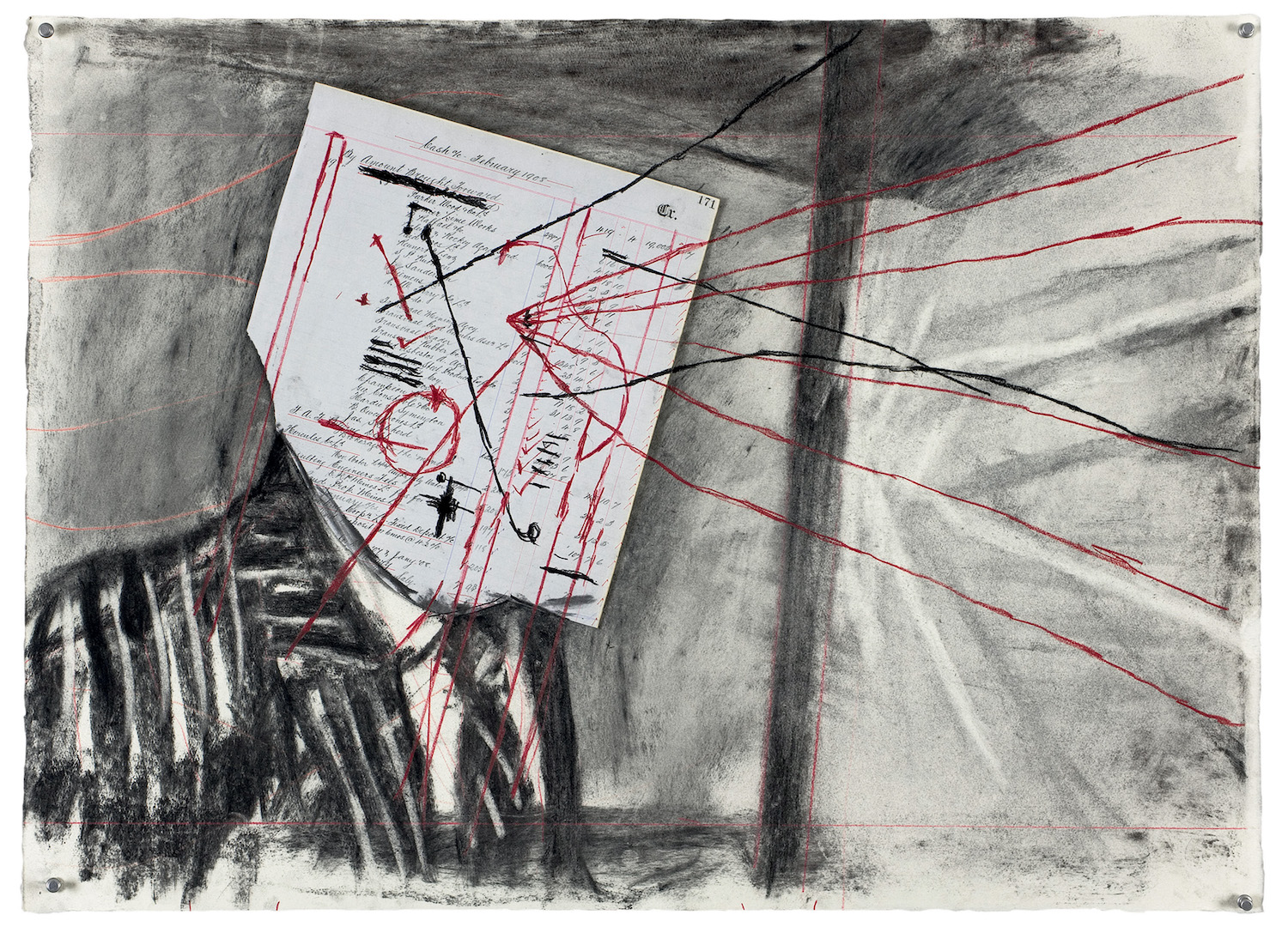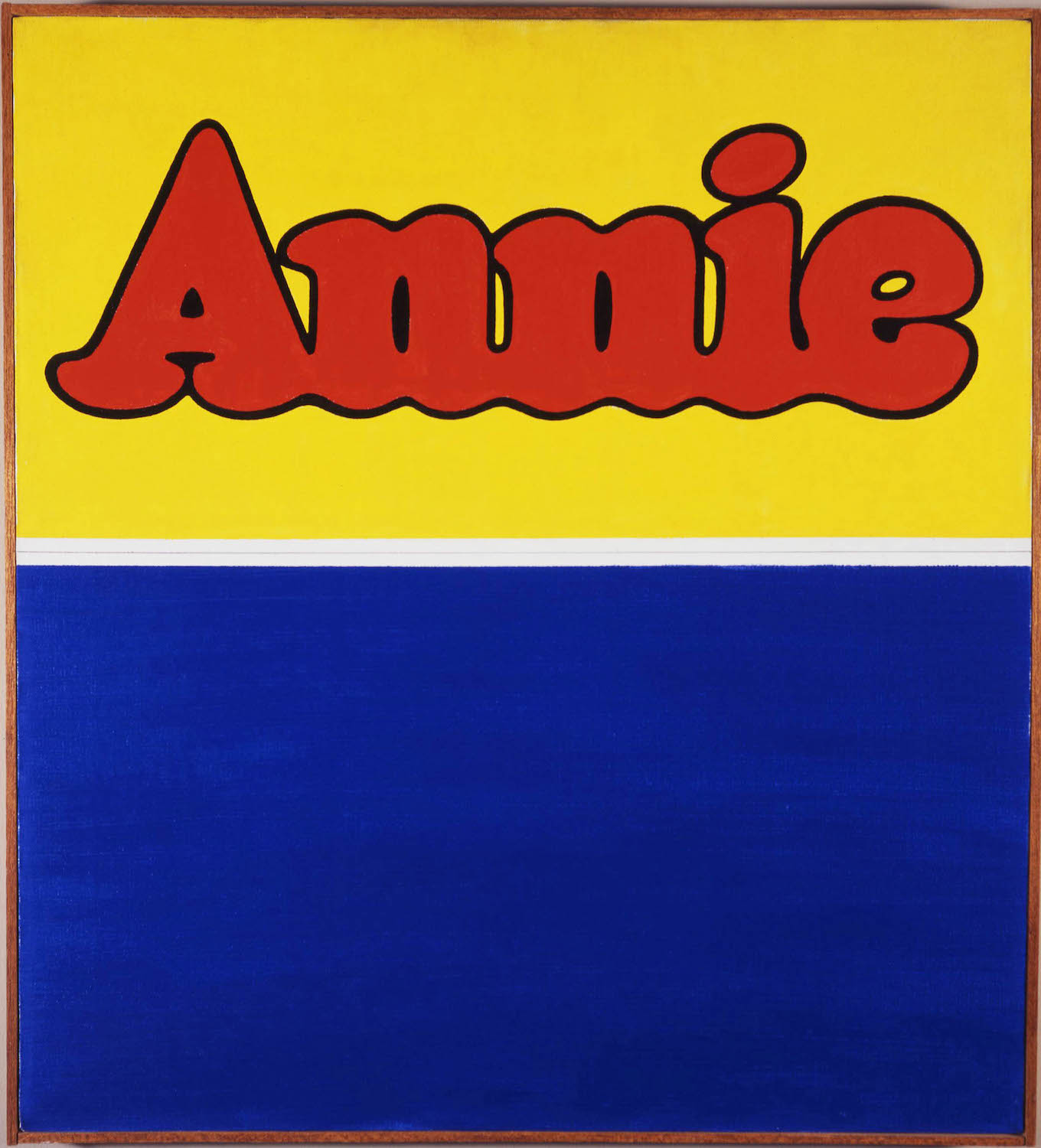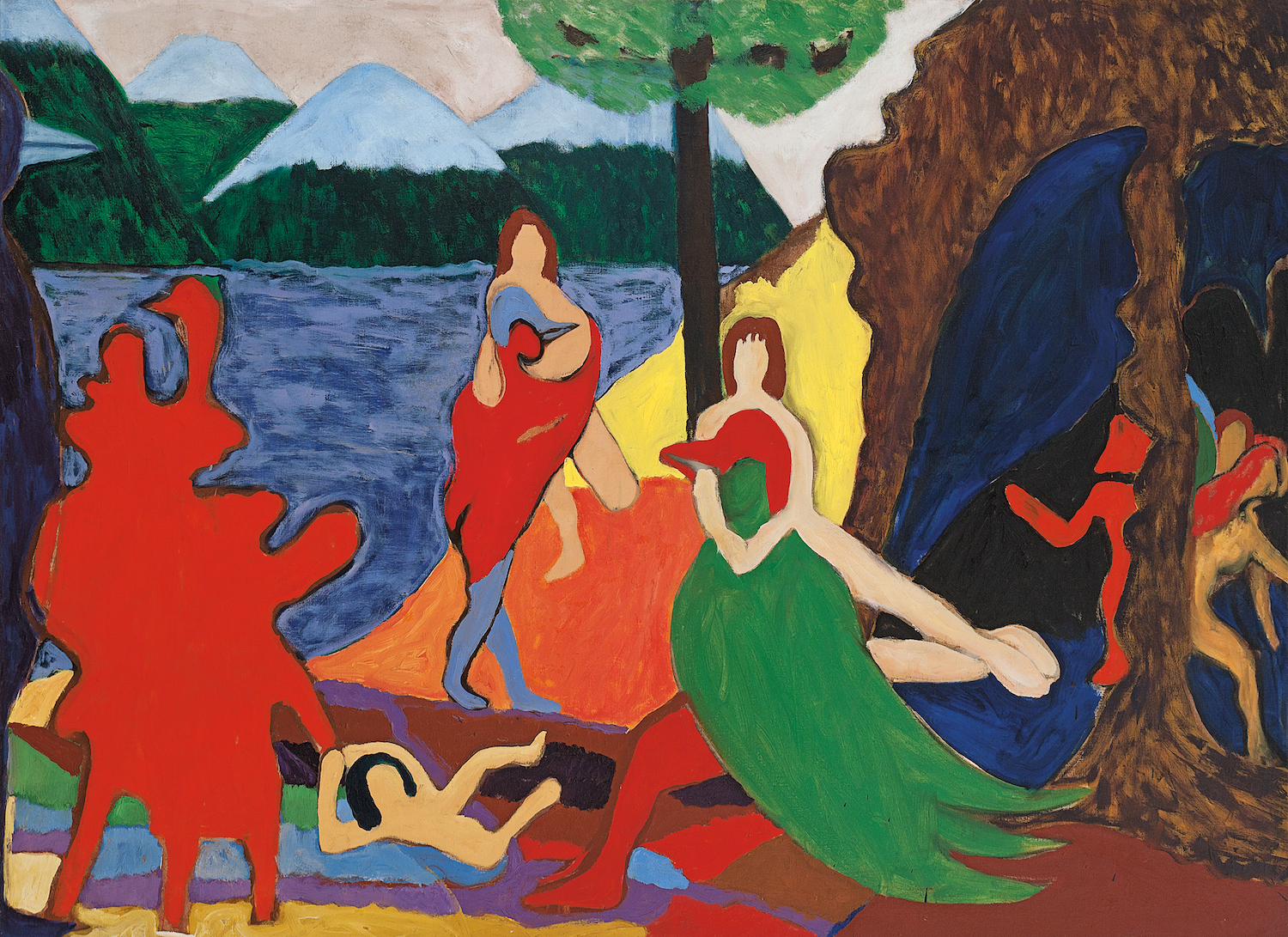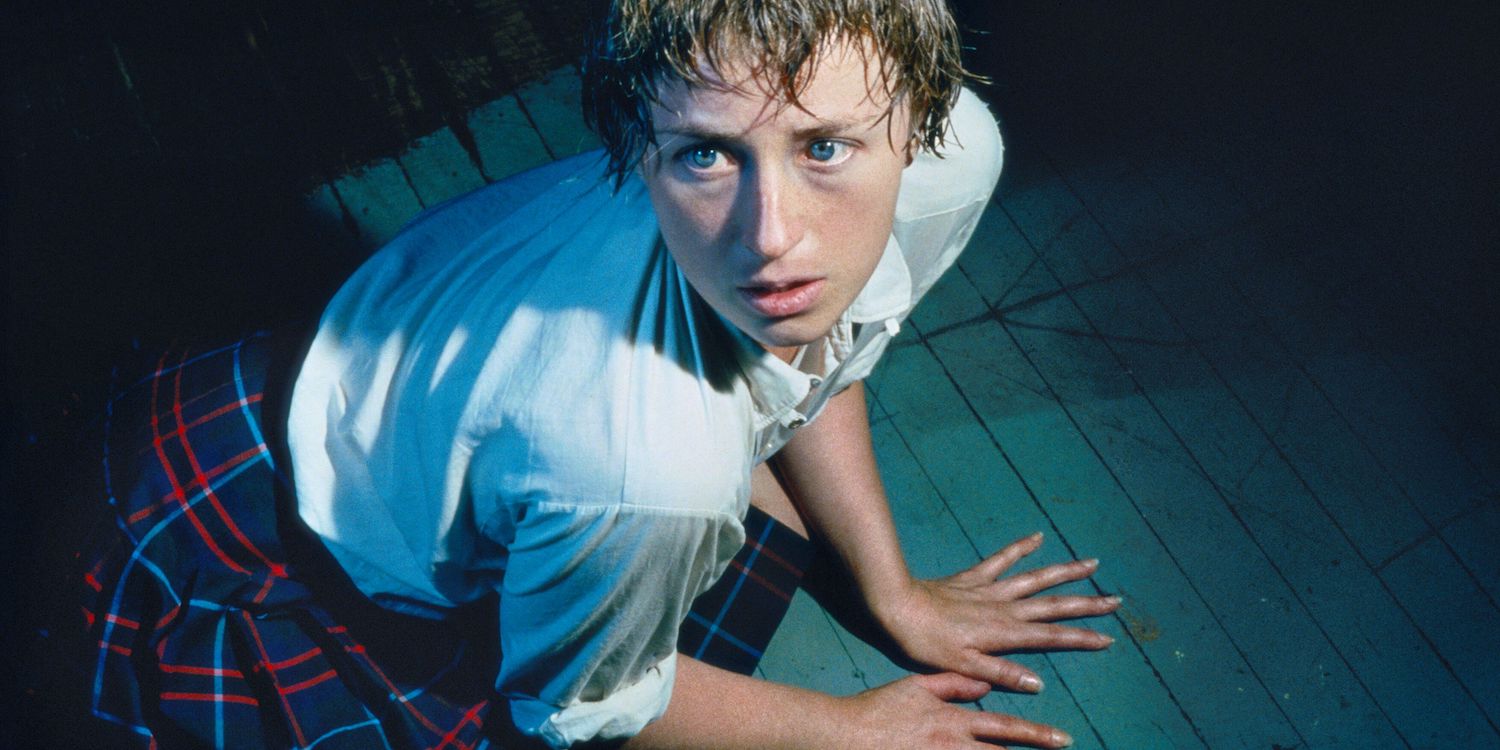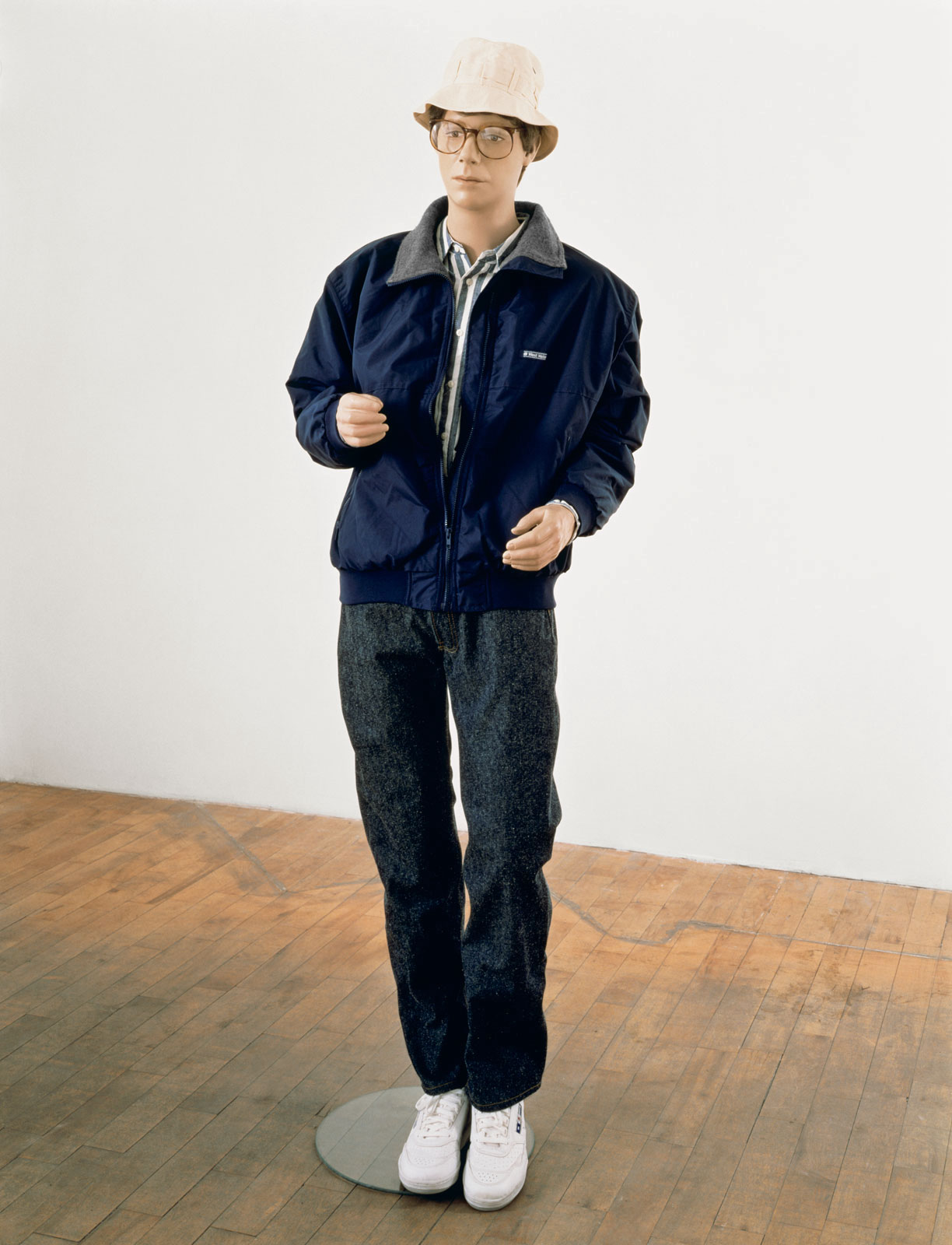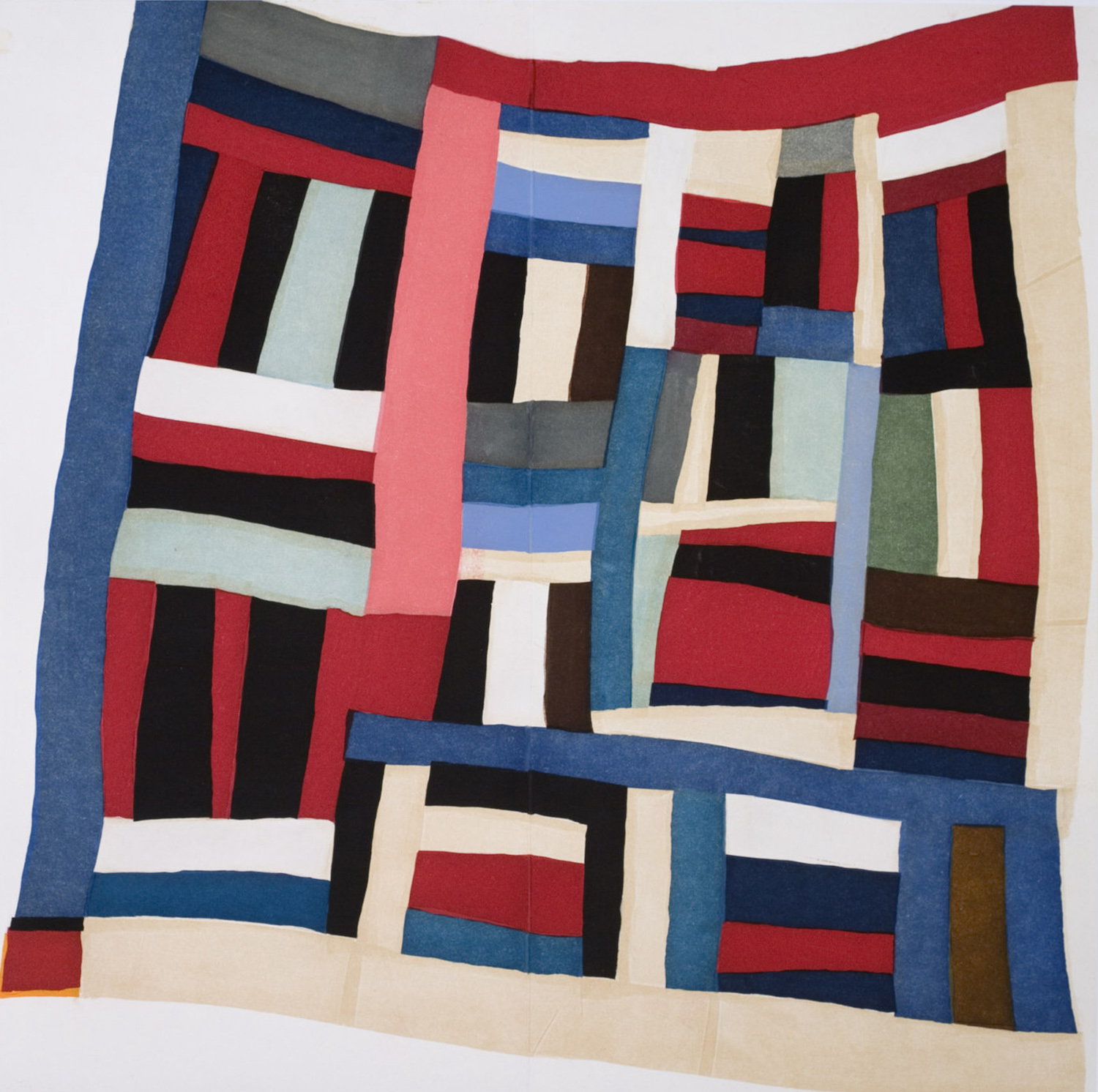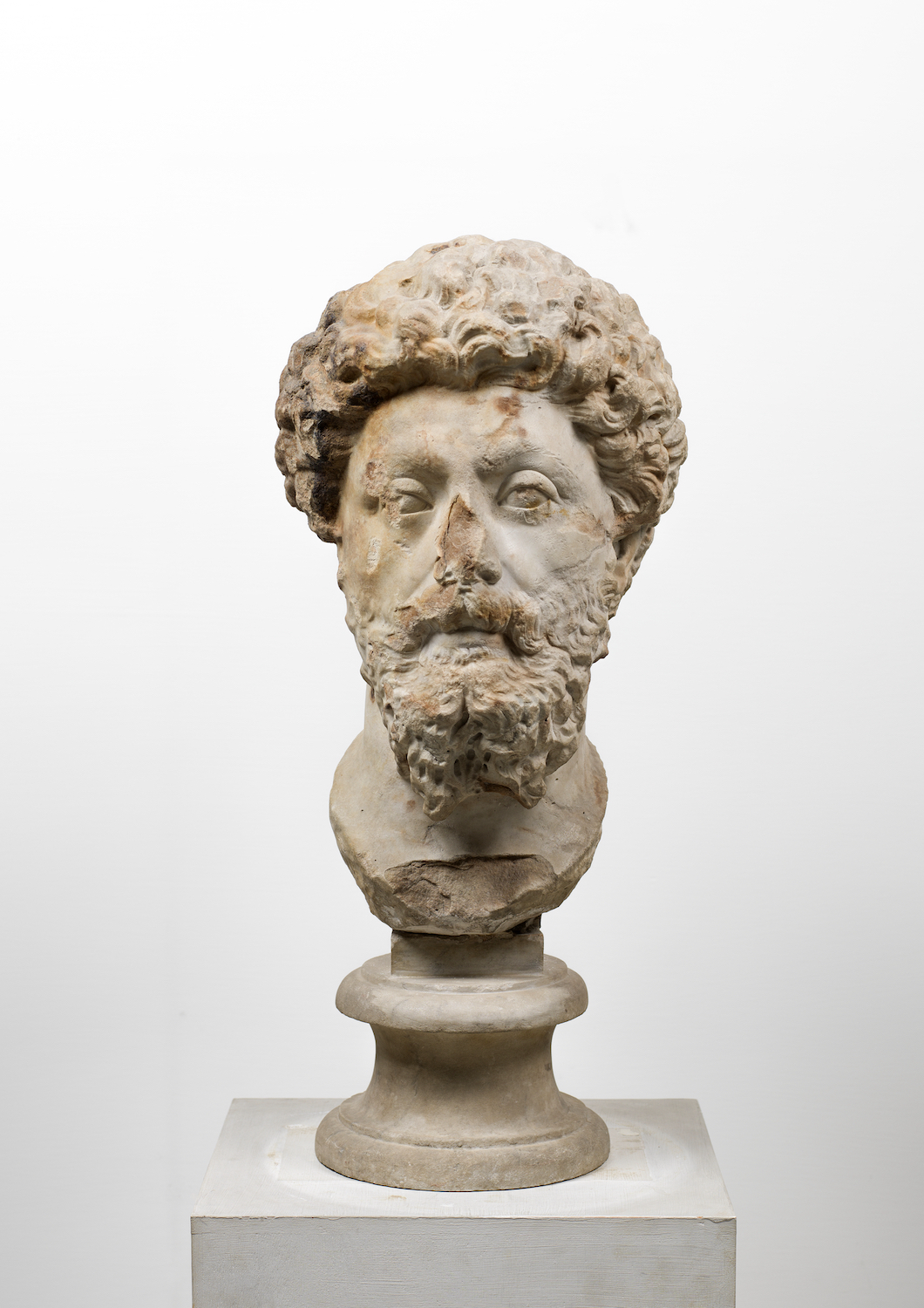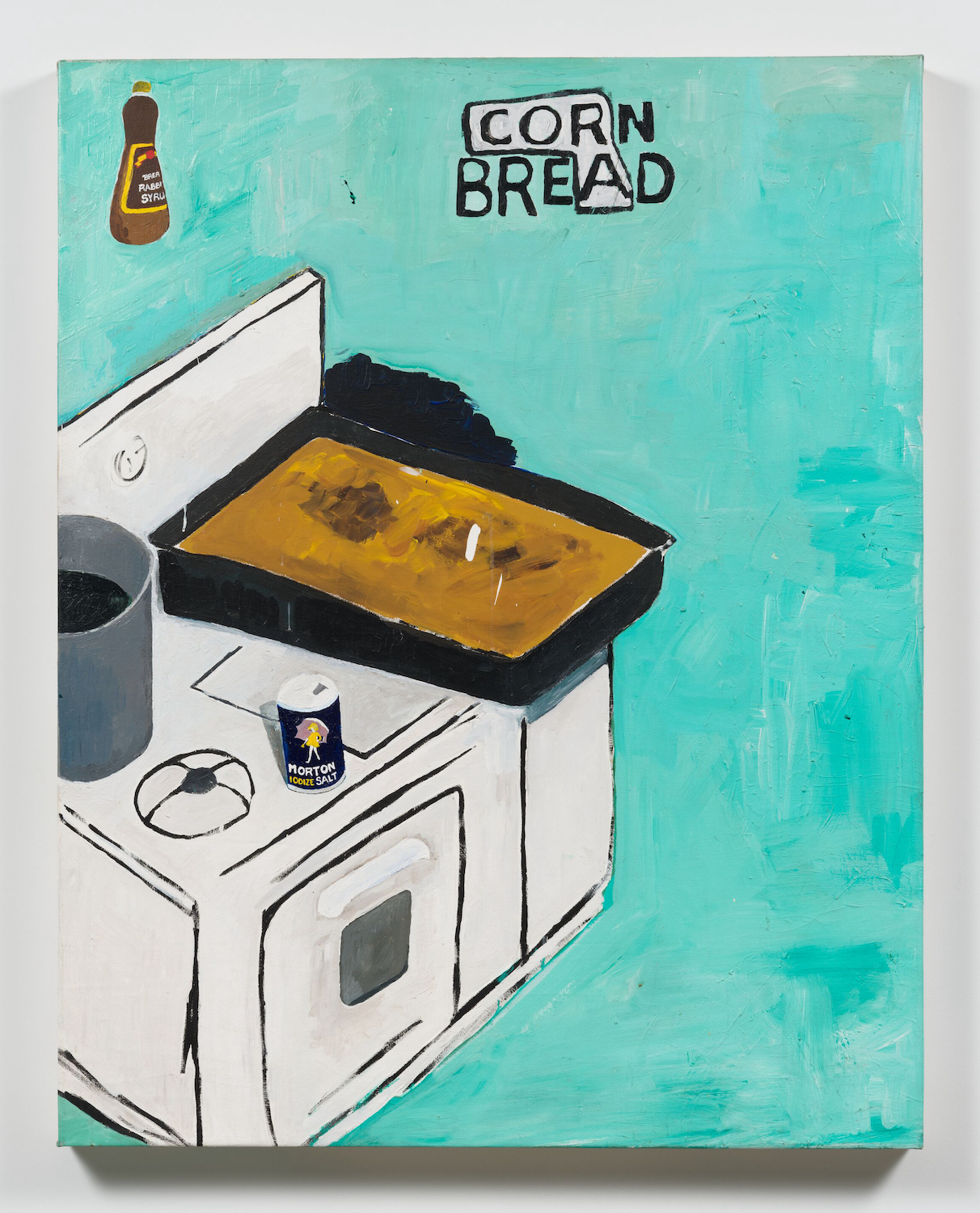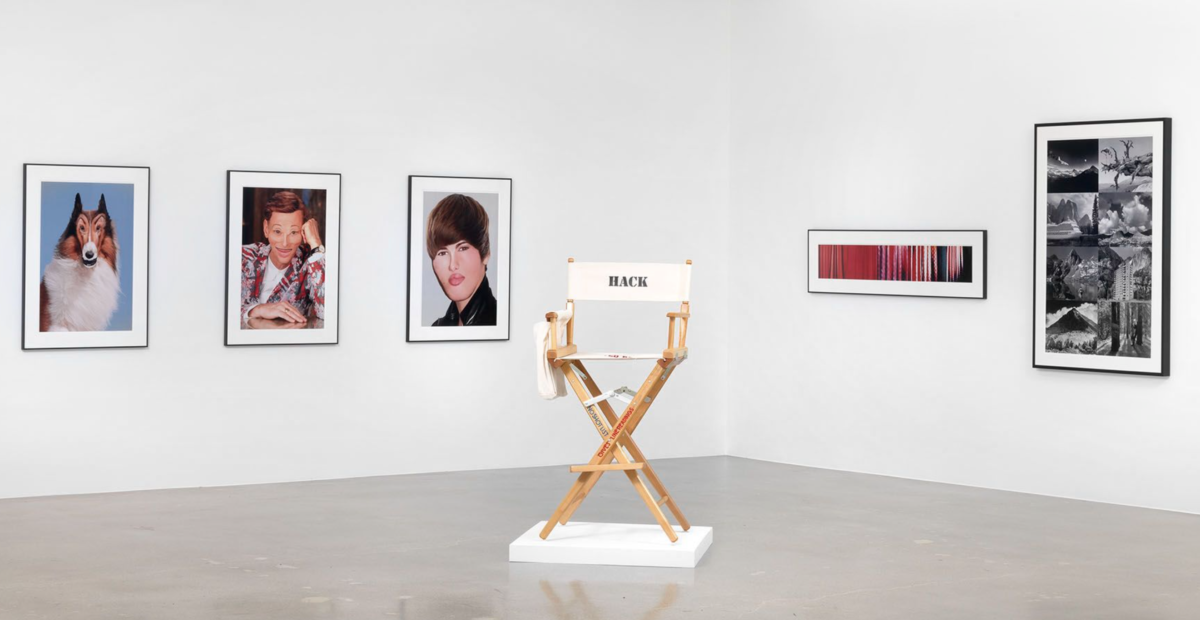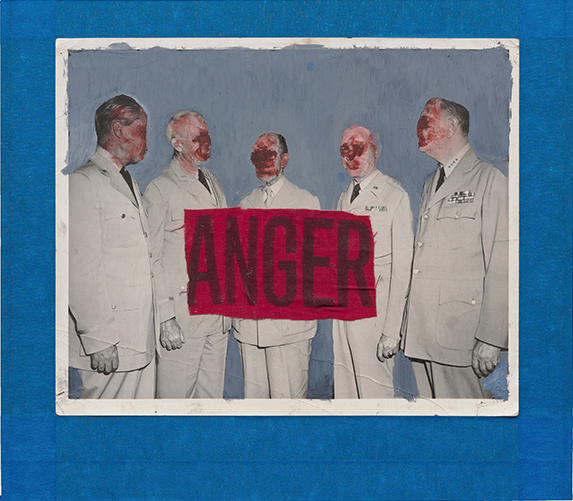Your cart is currently empty!
Tag: Sprüth Magers
-

FAIR AND SQUARE
Post-Fair Brings Equitability to Santa MonicaLast week, during Los Angeles Art Week, I saw James Franco everywhere. I saw James Franco at Felix at the Hollywood Roosevelt, where the David Hockney-painted pool was closed because a man had had a heart attack inside it the day before. I saw James Franco at the Karma party at Ghengis Cohen, his trucker hat popping up behind a psychic and very beautiful astrologer. I saw James Franco at Frieze, taking in the valuable wall real estate at the sizable David Zwirner booth. But the first place I saw James Franco smile was at the inaugural Post-Fair in Santa Monica, as Theta gallery founder and director Jordan Barse took him through her exhibition of Tinseltown-themed paintings by Pictures Generation artist Nancy Dwyer. I smiled at the Post-Fair, too.
The Post-Fair, a little jewel box of a fair held at the landmark Santa Monica Post Office building, was founded by Mid-City gallerist Chris Sharp, a dealer with excellent taste and an aptronym for a surname. He decided to start his own fair for a simple reason: Frieze, where the price of a small booth starts at $35,000, is just too expensive. Participating in that fair, or even its somewhat less costly alternative, Felix, can knock out an emerging gallery like Sharp’s, whose business is four years old. He aimed for something more equitable than the established fairs, splitting the cost of renting the post office between 26 galleries (all showing single-artist presentations) for a flat rate of $6,000 each.
“We’re in a moment where things are so difficult,” he says. “Survival feels so precarious and the market’s so weak, so I just wanted to create something where participating in it wasn’t an existential threat to the gallery. Because a lot of the time, when you’re doing these big fairs it’s make or break, just because the costs are so high.”
“To use Marxist terminology,” he says, chuckling, “we’re seizing the means of production.” The name really works.

Image by Artillery staff. Sharp’s fellow gallerists met the idea with enthusiasm. He invited galleries ranging from decades-old, established institutions like Sprüth Magers and PPOW, to far younger galleries, like the Dimes Square-adjacent King’s Leap, and CASTLE, which opened in a Hancock Park apartment less than two years ago. Instead of constructing conventional booths, each gallery received equitable wall space, lending the fair the feeling of a group show. The 1938 building, sun-soaked with Art Deco moldings and worn stone, was a pleasure to move through, especially in comparison to the claustrophobic convention center at the Santa Monica Airport. Numerous guests commented on how nice the space smelled, like fresh cut wood.
“It’s a really beautiful space, and the flow is nice and pleasant,” says Barse. “I love the scale of it. It just feels very manageable, whereas many fairs can feel very overwhelming and exhausting, with layouts that make you feel trapped. But I think that people flow through quite naturally here without feeling pressured or rushed. You’re engaging visitors more easily, and they have time to stop and chat about the art.”
Eden Deering, director of PPOW—which showed Harry Gould Harvey IV’s storybook-like, eerie work—described the Post-Fair as “refreshingly human.”
“It avoided the often transactional feel of white-walled booths,” she says. “Instead, it offered a sense of discovery and connection.”
Between the low costs and minimal construction, Sharp purposefully created an environment where there’s “a lot less pressure” to make sales, enabling exhibitors to take more aesthetic risk. He opted to show work by the late German-Iraqi sculptor Lin May Saeed, centering a piece depicting a wide-eyed, nervous doe. Sharp says that, despite Saeed’s renown in Europe, she has no market in the United States, and he relished the opportunity to bring her to a wider audience.
“I actually really like art fairs,” he says. “A lot of people complain about them, but one of their great virtues is you get a lot of people in front of your work. At my gallery, I’m lucky if I get 300 people to visit the show over the course of the entire show. You do an art fair, and you get thousands of people. I mean, not like everyone’s going to look, but you’re still getting this really high volume of exposure for your artists. So this fair is a perfect context to be able to show work by Lin May Saeed, where if we don’t sell anything, it’s not a big deal.”

Chris Sharp. Photo by Artillery Staff. Sharp expected some amount of blowback from the powers that be at Frieze. But the devastating Los Angeles wildfires changed things. “My fair feels like it’s essentially somehow critical of the status quo, but the fires and the aftermath kind of created this really nice and unexpected solidarity among the entire art community,” he says. In 2025, attending LA Art Week was not just an excuse to take pictures of one’s friends’ art and enjoy a complimentary champagne in a lounge sponsored by a Swiss bank—instead, it became a way to both offer real, needed support to the city’s artists and art workers, and to blow off steam and have fun. People actually danced (and made out on the dance floor) at the Hop Louie party. Everyone needed to breathe, maybe even the James Francos of the world.
CASTLE founder Harley Wertheimer, who exhibited paintings by Victor Boullet at the Post-Fair (my favorite was of a charming little owl with red-rimmed eyes), says we need people coming to LA in the wake of such tragedy. “I don’t even think it’s a purely financial thing,” he says. “It’s also an energy thing. It’s a beautiful city filled with beautiful, hardworking people who work in the arts, and their work should be seen.”
Post-Fair’s spirit of experimentation leaked over into Art Week as a whole. The New York-based Uhaul Gallery, which shows work in a moving van, parked outside the Santa Monica Post Office after getting ejected from Frieze. There was an inflatable tube man, like the kind they display outside car dealerships, waving around atop the van, by artist Sam Keller. He was rendered in the stars and stripes of the American flag, with an erect, inflatable tube penis flopping in the breeze. He made me happy.
-

ARTILLERY 2022 TOP TEN
There has never been a year in Los Angeles—certainly not in this century, more probably the last 30 years—when our artists haven’t delivered something surprising, extraordinary, something to change the way we talk and think about and look at the world. This year was no different—but somehow it felt more urgent; and on one level or another it was. We’re in trouble. The biosphere continues to collapse catastrophically. An era of trans-national and global migrations is upon us. Throughout the West, our constitutional democratic republics are under threat. Autocrats rain death and destruction upon neighboring states far and wide pursuing strategic dominance and sheer psychopathic fantasy.
Both individually and institutionally, we’re more demanding in recent years simply because the stakes are so much higher. Yet in one show after another, we could see artists peering through this twilight fog, cracking the codes of our cultural pathologies, navigating an evolving semiotic landscape to show us something new—a way of looking, seeing, listening, experiencing or understanding something; or simply drawing our attention to the extraordinary in plain view.

Kaari Upson, Kris’s Dollhouse (detail), © The Art Trust created under Kaari Upson Trust. Courtesy of Sprüth Magers Kaari Upson – never, never ever, never in my life, never in all my born days, never in all my life, never
Sprüth Magers – Los Angeles
August 4, – October 15, 2022In a video performance that constitutes part of the work, Kris’ Dollhouse (2017-19), Upson (in heavy, mask-like maquillage) guides us through portions of her over-scale domestic ‘dollhouse’ interior, accompanied by ‘Kris’ herself (similarly made-up), who bears an odd resemblance to Kim Gordon of Sonic Youth. I’m sure it wasn’t, but there was something oddly fitting about one of the songwriters of songs like “Ghost Bitch” and “Society Is A Hole” getting a guided tour of a place she would have understood down to her bones. Upson was, among many things, a kind of necromantic theoretician of the symbiotic construction of identity, place and habitat, also their ultimate entropic decay. She understood the fantasy and violence underlying this peculiarly human cultural construction and the not-so-indelible but corrosive stain it leaves behind. This was a forever never for the death days.

Catalina Ouyang, Debt, 2022 (detail). Image courtesy of the artist and Night Gallery, Los Angeles, and Make Room Los Angeles. Photo: Nik Massey. Catalina Ouyang – forgive everything
Night Gallery (in collaboration with Make Room Los Angeles)
November 12, 2022 – January 21, 2023The scope of Ouyang’s installation was immersive—not unlike the ‘restricted’ version of the three-body problem—the conceptual armature of the exhibition—that essentially underlies our physical existence on this planet. Video footage of dancers in flowing costumes (Syzygy, with choreography by Eloise Deluca and Lu Yim) swirled around gallery walls and scrims separating the space into three discrete zones (by way of spinning projectors), as if to simulate the ‘bodies’ in motion. Within the spaces, surreal assemblage configurations seemed to elongate and articulate moments in these trajectories—as history, allegory, legacy, both illuminating and mysterious—discrete events, yet conceivably connective tissues that may never properly join in this serious, delirious and above all, generous vision.

Wassily Kandinsky, Heavy Circles, 1927. oil on canvas 22-1/2 x 20-1/2 in. (57.2 x 52.1 cm). Norton Simon Museum, The Blue Four Galka Scheyer Collection Drawing Down the Moon
Hammer Museum
June 19, – September 11, 2022This was a show that seemed to take us completely by surprise and I almost wondered if it had been deliberately programmed to offset the grim here-and-now of its (fine) neighboring exhibition. But then this, too, was work which invoked or acknowledged an elemental struggle—this one implicated in both the shaping of the planet and its capacity to generate and sustain life. Of course the moon evokes myth and magic—and we need reminding of it at a moment when the tides have turned against us. That these exhibited treasures were drawn almost entirely from local institutions was somehow reassuring (it’s not all magic) and brought further delight.

Cy Twombly, “Leaving Paphos Ringed with Waves (IV)” (detail) (2009) acrylic on canvas (267.4 x 212.4 cm.) Private collection, courtesy Gagosian Gallery and J. Paul Getty Museum. © Cy Twombly Foundation Cy Twombly: Making Past Present
J.Paul Getty Museum – Getty Center
August 2, – October 30, 2022Regardless what first drew Twombly to the Eternal City and held him there, when you come down to it, neither abstraction nor expressionism could ever be enough for him (nor would it be even for most artists labeled as such). He was pursuing a kind of free verse mythography in drawing, painting, and the kind of mark-making we once simply called graffiti, and naturally went straight to the source. Virgil was clearly an inspiration, but as we saw in this ecstatic show, he made himself his own Aeneas.

Amir Zaki, “Built in 1874, Damaged in 1889, Renovated in the 1920s X” (60 x 48-3/4 in., framed), © Amir Zaki, Courtesy of Diane Rosenstein Gallery Amir Zaki – On Being Here
Diane Rosenstein Gallery
June 4, – July 16, 2022The sea, the endless sea; the limitless horizon line; and that final jumping-off point, our perch at the shore’s edge—and how do we get from here to there, where we finally tip over the vanishing point of the planet’s curvature? There’s loneliness and longing in these brilliant bisected views of our place of (mostly imaginary) voyage out—and voyage home. (Look to the birds for clues.) The title sums it up perfectly: this is where we are.

Nancy Evans, San Joaquin Series #3, 2018-2019. Transcendent
Louis Stern Fine Arts
December 10, 2022 – January 28, 2023Anchored by stunning masterpieces by Frederick Wight and Lee Mullican, and featuring outstanding recent work by Nancy Evans, Khang Nguyen, Kymber Holt and more, curator Michael Duncan makes a persuasive case for the transcendental mode as a constant through contemporary non-objective abstraction and well beyond, embracing organic, biomorphic, and mathematical dimensions.

Danielle Brathwaite-Shirley, GAPE, 2022. Courtesy of David Kordansky Gallery. Danielle Brathwaite-Shirley – GET HOME SAFE
David Kordansky Gallery
May 27, – July 1, 2022The masterpiece art encounter is, whether we realize it or not, a participatory event (which should be apparent from all of the foregoing). Not surprisingly game design (as with film, video, performance, other media) has entered the fine art domain—here integrating personal and panoramic aspects to create a simultaneously immersive and hypertextual (and textural) experience. Brathwaite-Shirley’s focus here is a very specific passage: the evening walk home, with black trans persons as her central subject. Race and gender fluidity magnify the stakes here, but also the community landscape, social markers, the manifold of individual and collective consciousness—all of which Brathwaite-Shirley has brilliantly illuminated.

Victoria Gitman, “Untitled,” 2013. Private Collection, Courtesy of François Ghebaly Gallery. Photo by by Paul Salveson. Victoria Gitman – Everything is Surface: Twenty Years of Painting
François Ghebaly Gallery
April 2, – May 2, 2022Once encountered, you can never have enough of these paintings (and drawings), these objects, these jewels. A few of them were just that in their pre-Gitman lifetimes. They draw our gaze, our desire to hold, to possess—invite us to venerate their preciousness. But more importantly they demand we linger with (in Gitman’s own words, quoted in Debra Singer’s essay on the show), the “circuits of desire” that connect our gaze with such work; furthermore, the potential disruptions of such ‘circuits.’ These are, after all, specimens, objects, facets, paintings—each one a masterpiece. This was a museum quality survey that would have been right at home at the Met.

Tala Madani, O, 2015 (detail). Image courtesy of the artist and David Kordansky Gallery, Los Angeles. Tala Madani: Biscuits
Museum of Contemporary Art (MOCA) – Geffen Contemporary
September 10, 2022 – February 19, 2023There is something almost brutally frank about Tala Madani’s paintings and animations; and it’s sometimes hard to figure out how and where it starts and if it ever really comes to something we can call an end. It was apparent early on that Madani drew and painted in a particularly unfiltered way. At the same time there’s almost always something tremendously articulate about it—she’s speaking to us as directly as painting can. Beyond whatever influences one might read into her particularly fluid and more than slightly scatological style, she may be the ultimate action painter. Call them turds or ‘biscuits’ (same thing ultimately), she paints the landscape humanity has fashioned for itself

Djanira da Motta e Silva, Bahian Market, 1956. Collection of the Los Angeles County Museum of Art. Afro-Atlantic Histories
LACMA – Resnick Pavilion
December 11, 2022 – September 10, 2023This is a sprawling—not to say exhaustive (though it is exhausting)—exhibition of art depicting, describing, reflecting, agonizing, protesting, denouncing, and/or otherwise documenting humanity’s recurring impulse to subjugate fellow members of their species (distinguished by whatever status classification they can think to devise—race, culture, language, location being fairly obvious characteristics to single out—with a specific focus on Europe’s and its former colonies’ human traffic from the continent that is mother to us all) to the state of insects, and thus establishing pretty definitively that, 5,000 years of civilization notwithstanding, there’s not a whole lot to distinguish our anthills from theirs. It should be required viewing for all students over the age of 12 and the entire state of Florida.
-

FALL 2022 PREVIEW HIGHLIGHTS
Get ready for the big 2022 Fall art season. This is traditionally the biggest show of any other time in the art world where most galleries put their best foot forward with their September and October exhibitions. We’ve selected a few highlights coming this Fall in Southern California.
The Geffen Contemporary at MOCA
Judith F. Baca: World Wall
September 9, 2022–February 19, 2023
Museum of Contemporary Art,
Los AngelesHenry Taylor: B Side
November 6, 2022–April 30, 2023
The Broad
William Kentridge:
In Praise of ShadowsNovember 12, 2022–April 9, 2023
The Huntington
Gee’s Bend: Shared Legacy
September 17, 2022–September 4, 2023
Hammer Museum
Bob Thompson: This House Is Mine
October 9, 2022–January 8, 2023
Orange County Museum of Art
13 Women
October 8, 2022–October 1, 2023
The Getty Center
Cy Twombly: Making Past Present
August 2–October 30
USC Fisher Museum of Art
Louise Bourgeois: What Is The Shape Of This Problem?
September 6–December 23
Roberts Projects
Kehinde Wiley
TBD
Museum of Contemporary Art
San Diego in La JollaAlexis Smith: The American Way
September 15, 2022–January 29, 2023
Hauser & Wirth Los Angeles
Cindy Sherman: 1977–1982
October 27–December 30
Sprüth Magers
Nancy Holt: Locating Perception
October 28, 2022–January 14, 2023
Ed Ruscha, Annie, 1965. Oil on canvas, 21-7/8 x 19-7/8 in (55.6 x 50.5 cm). Collection of Orange County Museum of Art. Museum purchase with additional funds provided by the National Endowment for the Arts, a federal agency, 1978.011. © Ed Ruscha Bob Thompson, Bird Party, 1961. Oil on canvas. 54 3/8 × 74 1/4 in. (138.1 × 188.6 cm). Collection of the Rhythm Trust. © Michael Rosenfeld Gallery LLC, New York Cindy Sherman, Untitled, 1981,chromogenic color print, 24 x 48 inches; © Cindy Sherman, courtesy the artist and Hauser & Wirth. Charles Ray, Self-portrait, 1990. Painted fiberglass, clothes, glasses, hair, glass and metal, 75 x 26 x 20 in (191 x 66 x 51 cm). Collection of Orange County Museum of Art. Museum purchase, 1990.002. Courtesy Matthew Marks Gallery. © Charles Ray. Photo: Reto Pedrini Loretta Pettway, Remember Me, 2007. Color softground and hardground etching with aquatint and spitbite aquatint, 28 3/4 × 28 3/4 in. The Huntington Library, Art Museum, and Botanical Gardens. Cy Twombly, Head of Emperor Marcus Aurelius, Roman,about 161–180 CE, marble, 19 5/16 x 11 13/16 x 11 13/16 inches; collection of Twombly Family, Rome; photo by Alessandro Vasari. Henry Taylor, Cora, (cornbread), 2008, acrylic on canvas, 62 5/8 x 49 7/8 x 3 1/8 inches; courtesy the artist and Hauser & Wirth; photo by Jeff McLane William Kentridge, Drawing for the film Other Faces, 2011, charcoal and colored pencil on paper, 221⁄2 x 31 inches; courtesy The Broad Art Foundation, Los Angeles -

Pick of the Week: John Waters
Sprüth MagersSprüth Magers is currently exhibiting two shows by two of the most notable creatives of the last forty years: Cindy Sherman’s “Tapestries” and John Waters’ “Hollywood’s Greatest Hits.” Though, if you’re anything like myself, one will leave you elated, and the other, deflated.
If you were hoping for a glowing review of Sherman’s new works, I’m sorry, because honestly, I’d recommend walking straight through it, up the stairs, and right into Waters’ exhibition. Sherman rehashes the same disguised self-portraiture concept she’s explored since the 1980s, this time “elevating” her Instagram posts by weaving (or having Flemish tapissiers weave) them into large tapestries. They’re works that—while stunning in their craftsmanship—are more clumsy than clever, though sure to thrill the postmodernist diehards.
“Hollywood’s Greatest Hits,” by contrast, holds some of the most engrossing art showing in Los Angeles today. The perpetual outsider, John Waters takes jabs at filmmaking, the art world, and his life throughout an array of sculptures, photographs, films, installations and more.
There are, as to be expected, the numerous references to death—a familiar theme for the noted provocateur. There is the darkly humorous In Shoulda! (2014), a piece which pairs photos of deceased starlets like Princess Diana and Whitney Houston with a movie poster declaring “She Shoulda Said ‘NO’!” There’s also the tragic and macabre Stolen Jean Genet, a copy of early activist and writer Jean Genet’s headstone.
But what’s most interesting is Waters’ exploration of his own life through his work. In 45 Days (2003), Waters assembles notecards on which he wrote daily to-do lists and the number of days since his last cigarette—now scratched through and completed. Organized in a massive collage, the note cards are not only the representation of Waters’ tireless creative efforts, but also become a chaotic, Twombly-esque abstraction. One can feel periods of greater stress and tension emanating from certain areas and times over others, the ink darker and obliteration more complete.
Overall—and as always—John Waters is not to be missed. He dances through the darkest parts of life with charm and wit, exchanging the deathly somber for the dearly sensitive.
Sprüth Magers
5900 Wilshire Blvd., LA, CA, 90036
Thru May 1, 2021; Appointment Only -

Llyn Foulkes – Old Man Blues
The plaintive title of Llyn Foulkes’ current exhibition – his first for Sprüth Magers – suggests we might be in for some mournful, if not downright bitter, riffs on laboriously trodden themes. This is not necessarily a drastic departure from the surreal dissonance of the visionary yet always personally and politically charged tableaux and talismans that have been at the center of his work for most of his career. But here, the suggestion of the battered souvenir, omnipresent in his work, always filtered through regret and disillusionment, is accompanied by a sense of displacement and foreshadowing that bleeds into the suggestion of a kind of virtual absence. In the Foulkes canon, the future is always viewed through a rear window of anticipated corruption or disintegration – consider the petrified-looking bark fragment framed in the window of a pockmarked car door of Vasquez II (2016). In turn, the castaway may become a kind of grail (e.g., Untitled (“Dinghy”) 2016). Always the most feral of the Ferus alumni, Foulkes can scarcely conceal his disgust with a civilization clearly ‘heading south’; but still at the height of his powers, he is far from ‘throwing in the towel’ (belying the work bearing this title). In his Old Man Blues, Foulkes nevertheless makes emphatic the sense of broken connection, alienation or incongruous isolation. In the cold, broken universe of Night Train (2016), we are all lost refugee children (or their ghosts) seeking a dubious virtual asylum. As always, the frame – whether a wood panel, a black velvet border, or the craggy desert moutainscape of Agua Dulce – is crucially important (even when traversed or violated), underscoring that amid interior oceans of morbid denial, some things will not be denied.
Sprüth Magers
5900 Wilshire Boulevard
Los Angeles, CA 90036
Show runs thru March 4, 2017
